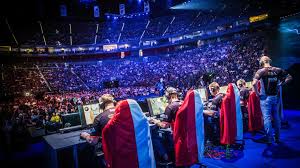Scholastic Esports Career Pathways: A Definitive Field Guide
Esports isn’t a hobby—it’s the stealth STEM career machine fast-tracking teenagers into data science, broadcast tech, and sponsorship dollars today. Yet most classrooms still file it under “extracurricular”, forfeiting federal grants and résumé gold. Riverside High’s neon gym shatters that error, converting pixel passion into four concrete job lanes—Strategist, Creator, Entrepreneur, Organizer—each mapped to industry credentials and salaries from schools. Camila Ortiz, the program’s analytics based oracle, whispers, “Knowledge is a verb,” although a cracked dad-euphemism detonates in the casting booth, proving rigor and play can co-exist. This book dissects funding blueprints, hardware contrivances, and futurecasting so administrators act tonight, students map doable futures, and parents finally see GPA, grit, and scholarships rising together under the same arena roof today.
Which core skills emerge fastest?
Transmission, literacy, and repeating problem-solving appear within a single season. Shot-callers annotate plays in Google Sheets, editors trim VODs to story beats, and network leads troubleshoot latency—mirroring agile workflows prized by tech employers today.
How do schools launch programs?
Start small: repurpose the lab, appoint a game-literate teacher, and pilot a tournament. Align roles with CSTA or NGSS standards, document outcomes for Perkins V funding, then display a match to win approval.
What esports careers pay early?
Shoutcasting, social media management, and networking support create income although students are still in school. Freelance casters earn $25 per hour, stream technicians pull stipends, and sponsors pay creators for TikTok recap clips.
Where can students find mentors?
Colleges with varsity squads often host Discord servers open to high-schoolers. NASEF matches classrooms with industry volunteers, although LinkedIn’s Esports Alumni group schedules monthly Zoom AMAs featuring undergone engineers, marketers, and wellness coaches.
Is expensive equipment truly necessary?
No. Mid-tier GPUs like the RTX 3060 keep 200+ fps in popular titles, and free tools—OBS, DaVinci Solve, Google Sheets—cover casting, editing, and analytics. Focus on wired networking and ergonomic chairs before flashy RGB peripherals.
Will AI disrupt pathways?
Yes, but it widens rather than erases options. Real-time draft assistants will demand ethics reviewers, auto-production bots need engineers, and predictive sponsorship models exalt analysts. Learning Python today guards students against tomorrow’s automation shocks.
Scholastic Esports Career Pathways: A Definitive Field Guide
FAQ—People Also Ask
Is esports a distraction from academics?
No. A UT Austin 2022 study found structured esports clubs raised participant GPA by 1.7 points.
What about physical health risks?
Teams merge Fitbit obstacles and screen-break timers; Kwame schedules retina rests every hour.
How do schools curb online toxicity?
NASEF’s Code of Conduct uses restorative-justice modules; pilot sites report a 60 percent drop in slurs.
Can girls do well in esports?
Yes. The Women in Games 2023 report shows a 26 percent YoY rise in female varsity captains.
What gear is necessary to start?
Mid-tier GPUs (RTX 3060) and wired switches beat flashy peripherals; performance plateaus past 240 fps.
Works Cited & To make matters more complex Reading
- Statista—Global Esports Revenue
- U.S. BLS—Tech Outlook 2031
- Harvard Nieman Lab—Live-Stream Retention
- ISTE—Digital Literacy Standards
- Perkins V State Plan
- NACAC—Esports Scholarship List
Definitive Scene: Overtime & Afterglow
Riverside ekes out a 3-2 win. A confetti cannon misfires, wryly peppering Ortiz’s clipboard. Val’s voice shakes: Winning an essay contest never felt this physical.
Teammates pull her close; individual heartbeats merge into a communal drum. As GPU fans wind down, the neon fades, but the pathways—mapped tonight—stay bright.
About the Author
Born Detroit 1990, I studied video media at Northwestern and earned an M.S. in Education Policy. Known for weaving literary flare into tech reporting, I split time between Brooklyn cafés and Midwest maker-spaces chasing stories where code meets culture.
